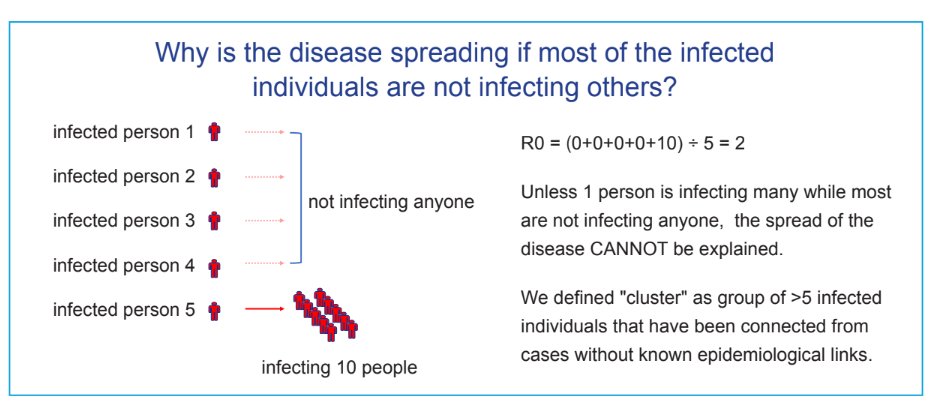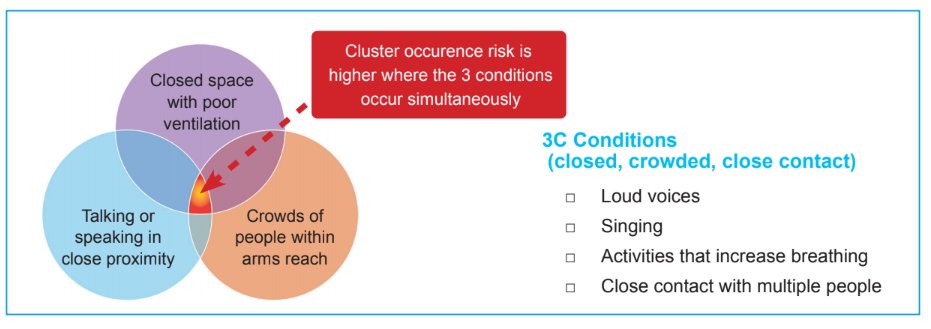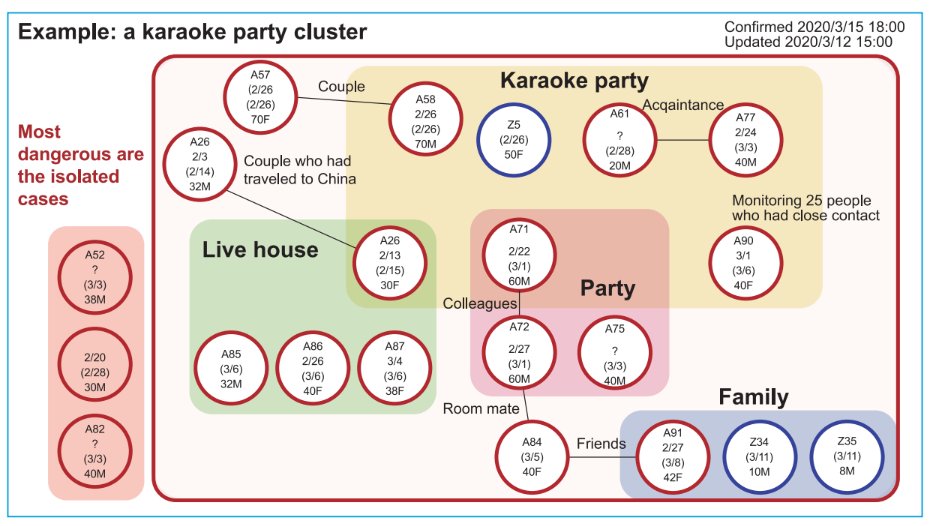Japan is using big teams of public health nurses to perform "cluster busting" contact tracing. A thread summarizing their approach, as described in this translated (almost official) guidance document now on the web. 1/11
https://drive.google.com/file/d/1RxLGyRhdKcW-g_laLb7SQxFanW_kJcRP/view
https://www.bloomberg.com/news/articles/2020-06-23/the-low-tech-way-that-japan-managed-to-tackle-the-virus-quickly
https://drive.google.com/file/d/1RxLGyRhdKcW-g_laLb7SQxFanW_kJcRP/view
https://www.bloomberg.com/news/articles/2020-06-23/the-low-tech-way-that-japan-managed-to-tackle-the-virus-quickly
The approach is based on their observation that many individuals do not infect others, but this is balanced by superspreading events. This is known as overdispersion in the number of secondary cases. R0 is an average and masks a lot of heterogeneity. 2/11
Japanese scientists were also the first to highlight the importance of close conversation in crowded, closed (indoor) environments for transmission. This is known as the 3Cs. Cluster occurrence risk is highest in these settings. 3/11
Importantly, they have observed the chance of forming a cluster does not depend on disease severity of the index case. People with mild disease can be just as infectious and may be even more active and likely to transmit. This is why we see clusters in young people. 4/11
The aim of the Japanese approach is to target these clusters as they contribute the most to spread. Professor Oshitani described it as seeing the forest, not the trees. We may not prevent all transmission chains, but can focus on the important ones. 5/11 https://www.japanpolicyforum.jp/diplomacy/pt20200605162619.html
The approach emphasizes the value of retrospective tracing. Usually we think about prospective tracing, where we identify contacts to be isolated to prevent new chains of transmission. This relies on fast testing and tracing, which is challenging for this virus. 6/11
In contrast, retrospective tracing is about looking even further backwards (14 days) to really try to identify the original source. The assumption is that the infection is somehow linked to a cluster. Where we can find this cluster, we can efficiently uncover new chains. 7/11
The Japanese have not relied heavily on mass testing, but they do use testing as part of their cluster investigations. If the nurses identify a cluster based on their interviews, they test people whether or not they have symptoms to try to uncover more infections. 8/11
The guidance describes an example of a karaoke party cluster. Where isolated cases popped up in the community, contact tracing nurses interviewed the cases to identify a source cluster, here in a 3C setting. 9/11
Finally, the document notes that this starts to break down when community transmission is widespread. Isolated cases become harder to link back to a common source. This is most effective when community transmission is still relatively low. 10/11
So I'm still wrapping my brain around their approach, but I wanted to share what I have found so far, with the hopes that it can add to our discussions about contact tracing.
Thanks @miekocakes @fightingenie55 for sharing! 11/END https://twitter.com/nataliexdean/status/1278148281613287425?s=20
Thanks @miekocakes @fightingenie55 for sharing! 11/END https://twitter.com/nataliexdean/status/1278148281613287425?s=20

 Read on Twitter
Read on Twitter




